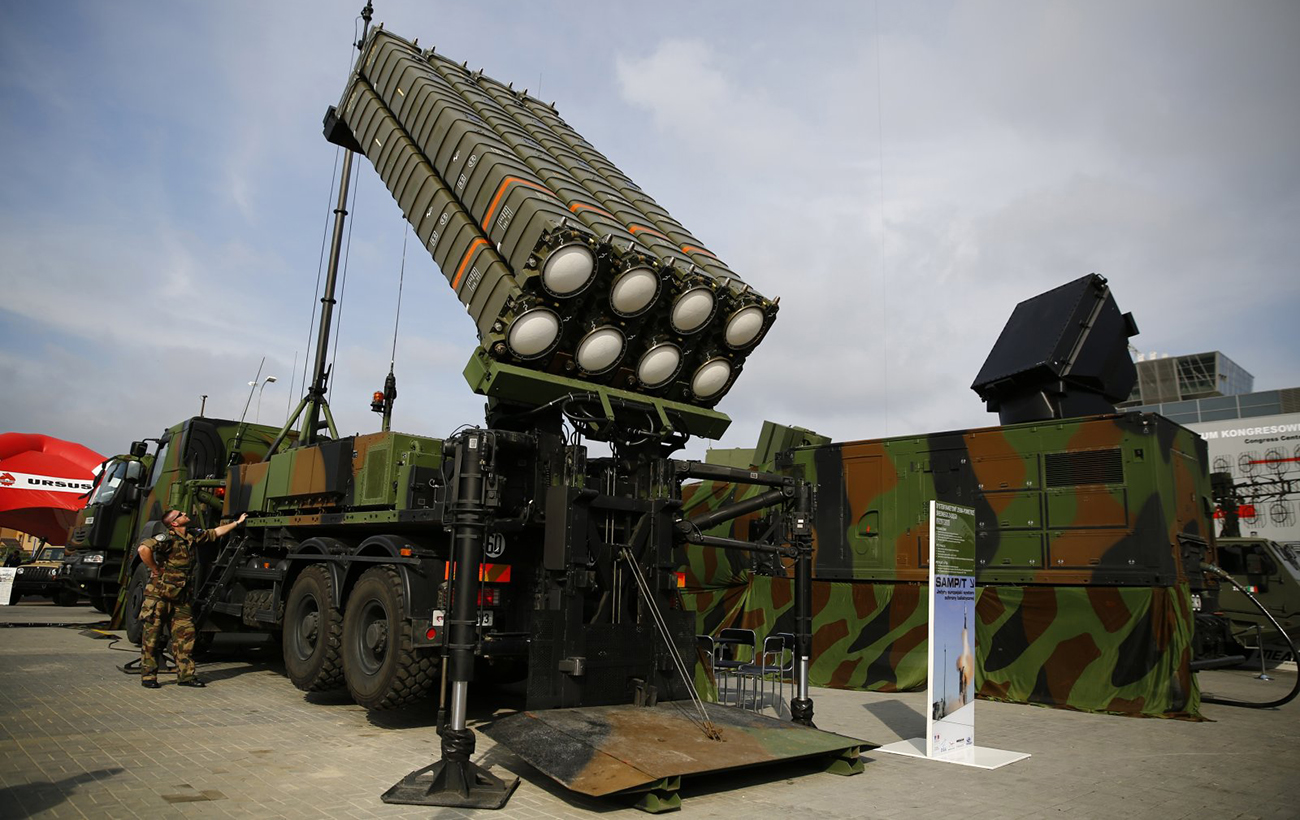



The SAMP/T complex is likely already in Ukraine. Photo: mil.in.ua
Russian missile strikes on Ukraine resumed on 28 April after a 50-day pause that was needed to replenish stocks depleted by the unsuccessful winter campaign to take out Ukraine’s energy sector, Vadym Skibitsky, Deputy Head of the Main Directorate of Intelligence (GUR), told in an interview with RBC.
Despite sanctions, Russia is able to keep producing missiles. Having depleted a significant portion of their missile arsenal — nearly 900 missiles during the fall and winter — the Russians have managed to establish production lines to replenish their supplies, as per Skibitsky. The evidence lies in the debris of the missiles used by the aggressor, which suggests recent manufacture. He clarified, “These are ammunitions made in the first quarter of 2023.”
Skibitsky added, “At least twice a month they bring ‘Kalibrs’ to the occupied Crimea. Currently, Russians can produce about 25 ‘Kalibrs’ a month, Kh-101 – 35 units, ‘Kinzhals’ – two units a month, ballistic missiles 9M723 for ‘Iskander-M’ – five units. Thus, they manage to bring in components for the production of missile weapons, despite international sanctions.”
Russia’s missile tactics have changed, compared to the fall-winter period, when energy infrastructure was targeted. The strikes are more often but with less intensity: each one comprises less than 30 missiles. As well, they have increasingly started to target the Ukrainian capital Kyiv.
It was there that on 4 May, Ukraine’s air defense forces, in a historical first, used an American-made Patriot SAM to destroy a Kizhal missile apparently sent in revenge for a drone attack on the Kremlin — an incident which, according to Ukraine’s intelligence, was a Russian inside job for propaganda purposes.
The Kremlin propaganda first ignored the failed attack on Kyiv, after which they started claiming that the weapon used was not an “unstoppable” Kinzhal after all.
12 days later, in a likely attempt to specifically target the Patriot SAM, the Russians repeated their night attack on Kyiv, for the first time combining different ballistic weapons. According to Ukraine’s General Staff, the enemy fired six Kinzhal and ten missiles from the S-400 and Iskander-M systems from Russian territory and airspace at once. This entire set was flying toward the capital simultaneously with several Kalibr missiles and Shahed drones and, according to the Air Force, was successfully shot down.
“The destruction of six Kinzhals at once is, without exaggeration, a unique event for the Ukrainian military, the manufacturers of the Patriot air defense system, and the Russians themselves. The fact is that this missile, like its prototype Iskander, was originally developed to suppress the Patriot umbrella in the event of a war between the United States and NATO. Speaking about the creation of the Kinzhal in 2018, Putin claimed that this missile allegedly ‘allows guaranteeing the defeat of all existing and prospective air and missile defense systems.’ However, in practice, it turned out that this was not the case, and it is hardly hypersonic in the classical definition of the term,” RBC notes.
According to aviation expert, former test engineer at Antonov Design Bureau Kostiantyn Kryvolap, the fastest that Kinzhals can get is 5-5.5 Mach, below the claimed 10 Mach. As they approach the earth according to a ballistic trajectory, they slow down to get in touch with navigation systems and refine their target, moving with a speed of only 1.5-2.5 Mach, which is peanuts for a Patriot, RBC writes.
Historical first: Ukraine confirms shooting down Kinzhal hypersonic missile with Patriot SAM
According to Kryvolap, Russia reportedly has six serviceable MiGs capable of carrying Kinzhals. Given that one MiG can carry only one such missile, this allows concluding that six is the largest size of a Kinzhal volley that Russia can fire and that they used all their capabilities in the second strike on Kyiv on the night of 18 May.
To conceal their unsuccessful attack, Russian propagandists lied that they struck five Patriot launchers and managed to take out its radar in that attack, despite the fact that one Patriot launcher was likely only minimally damaged by debris from destroyed missiles.
The Russian forces’ missile strikes have been hitting Kyiv continuously, a move that Skibitsky interprets as a ploy to stretch Ukraine’s air defense systems thin across both the front lines and the rest of the country. “Obviously, they are aiming for this, firing at Kyiv. After all, we lack air defense for both the front and the rest of Ukraine’s territory. For such a country, by various estimates, 10-20 systems like Patriot are needed,” Skibitsky underscored.
However, the Patriot is not the only target of Russia’s attacks. The SAMP/T air defense systems, which offer capabilities similar to those of the Patriot missile system and have reportedly arrived in Ukraine, are likely to become the next target of attacks.
Apart from the Patriot and SAMP/T, Russians are now deploying missile weapons, not solely with an aim to demolish Ukrainian air defense systems, but also towards Ukrainian control points, which act as decision-making centers, supply routes, ammunition collection centers, technological hubs, fuel storage areas, and regions with high troop concentration, Skibitsky revealed.
This strategic shift in the enemy’s missile campaign is designed to disrupt Ukraine’s military preparations for the upcoming spring-summer offensive.
The intelligence reports suggest that Russia’s missile campaign will persist as long as it has the resources to do so, potentially combining various tactics and resorting to new experiments. In response, Ukraine is redoubling its efforts to fortify its air defense systems. Encouragingly, Skibitsky noted, “It seems that there is already a Western consensus on this issue,” signifying increased international support for Ukraine in this crucial aspect.
Tags: air defense, Kinzhal, Russian missile attacks, SAM Patriot
